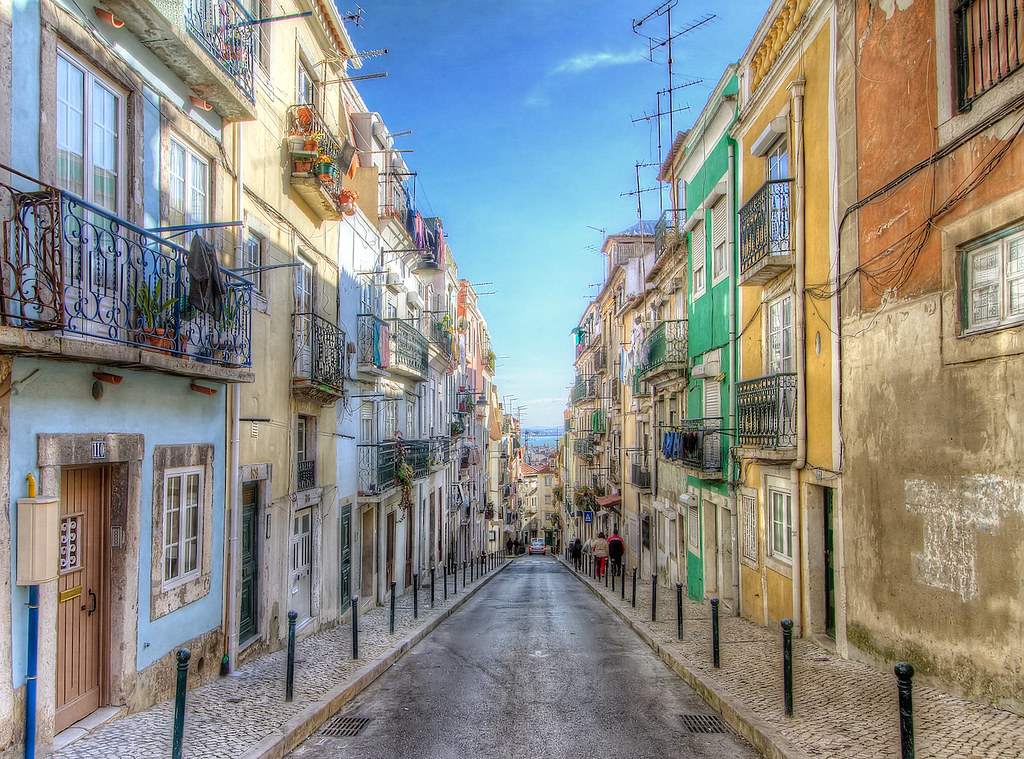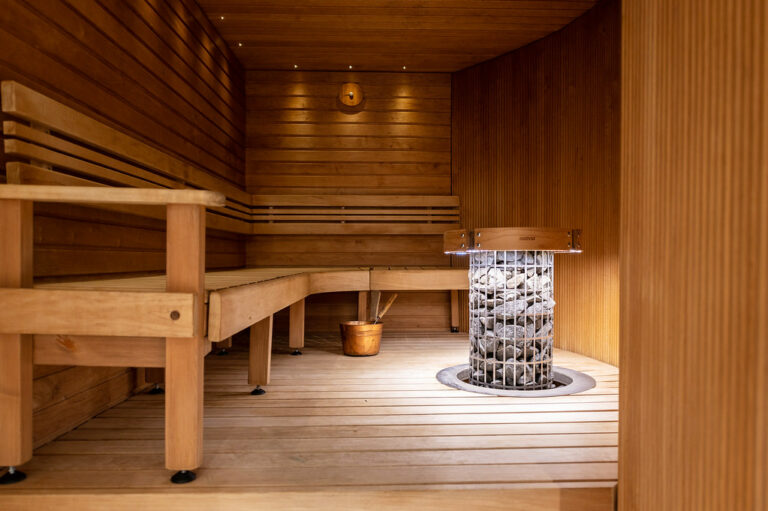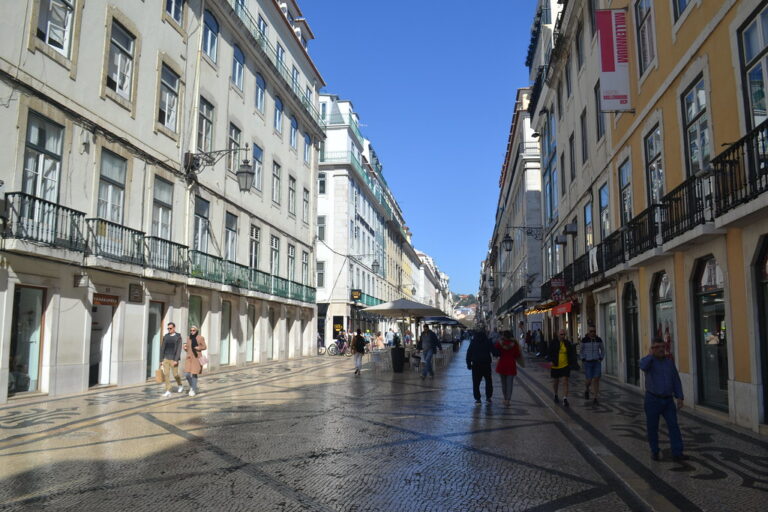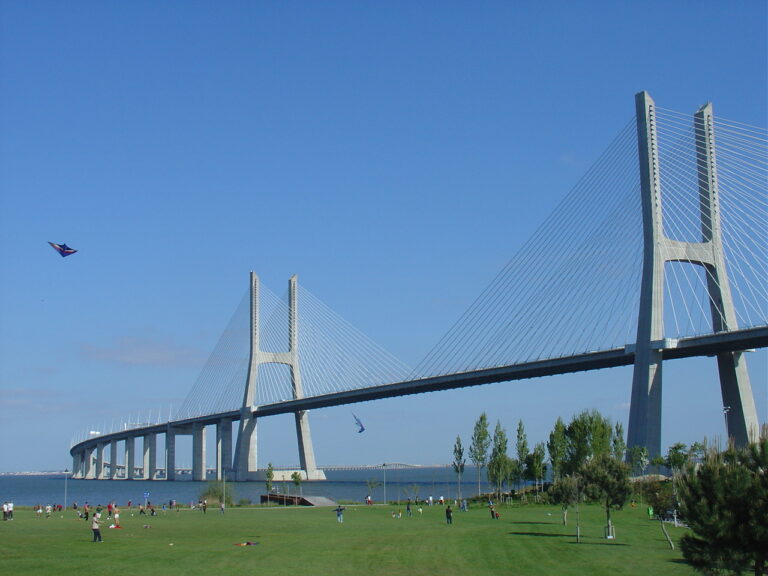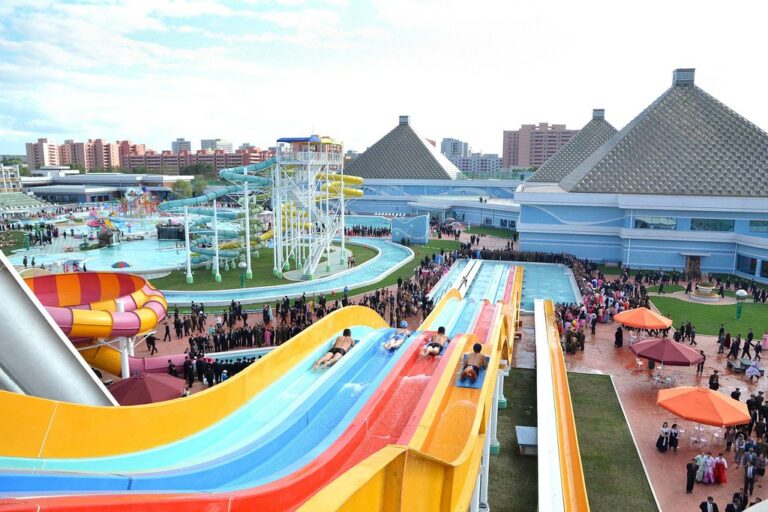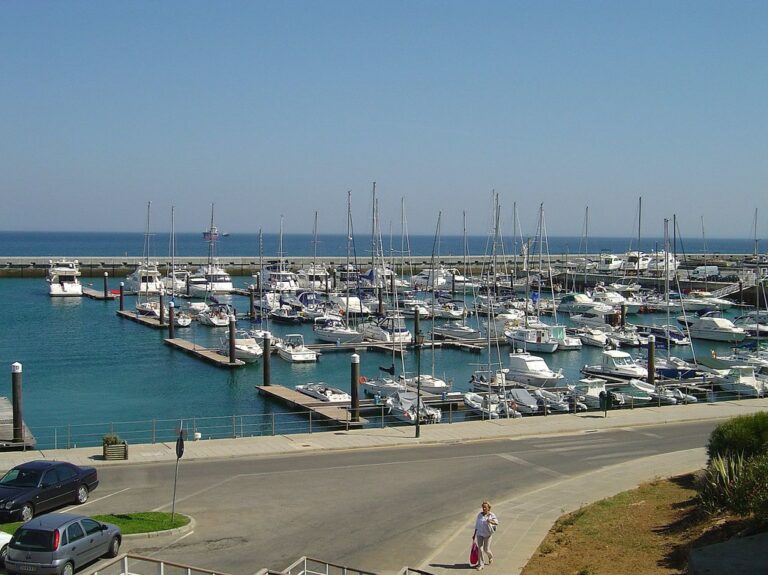I enjoy Lisbon’s historic architecture, charming streets, and vibrant culture. There is always something new to explore whenever I go there for a vacation.
But one question people often ask is, “Is Lisbon walkable?” The short answer is that the Portuguese capital is one of the most walkable European Cities, but getting up the seven hills of Lisbon can be challenging.
So be sure to read my article on navigating the seven hills of Lisbon to make your trip enjoyable. But today, I will delve into the city’s walkability, offering insights into the terrain, weather considerations, and distribution of attractions.
Additionally, we’ll provide practical tips on navigating the city on foot and explore why walking remains one of the best ways to experience Lisbon.
So, how walkable is Lisbon?
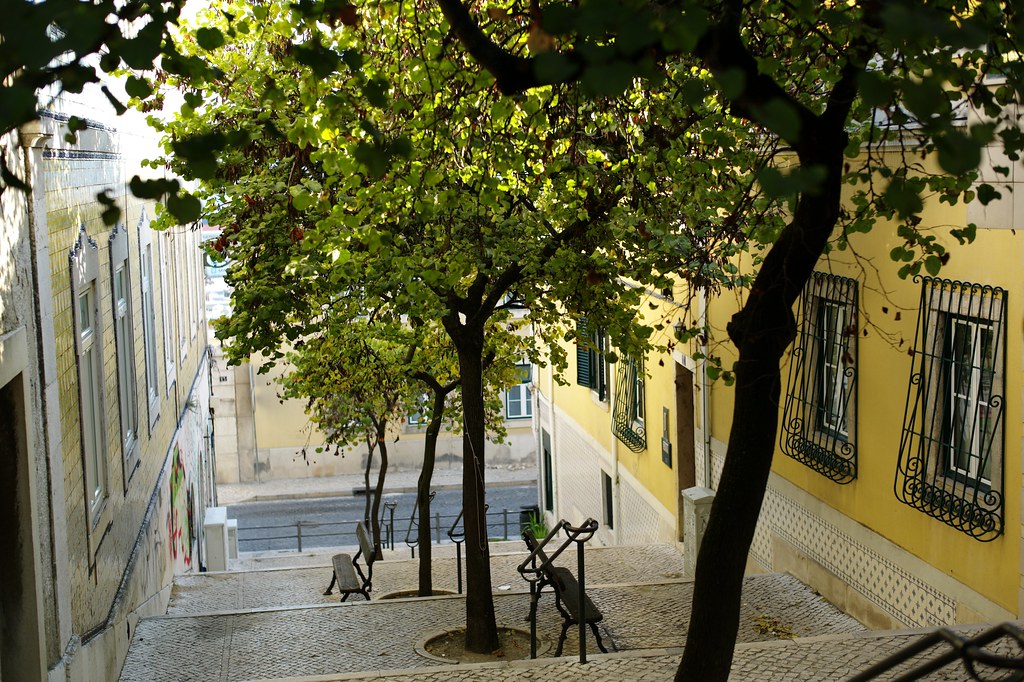
Lisbon is very walkable, especially in the flatter downtown districts. The city is safe, compressed, and filled with gorgeous architectural details best appreciated on foot.
Nevertheless, Lisbon’s challenging terrain and spread-out attractions like Belem mean most visitors to the city use public transport to complement walking—especially the historic trams.
Planning sightseeing around metro/tram lines that connect key landmarks makes seeing the city on foot much more manageable.
Here are a few things to consider if you plan major Lisbon sightseeing by foot to tackle the steep incline in the historic center of Lisbon:
Prepare for Cobbled Streets
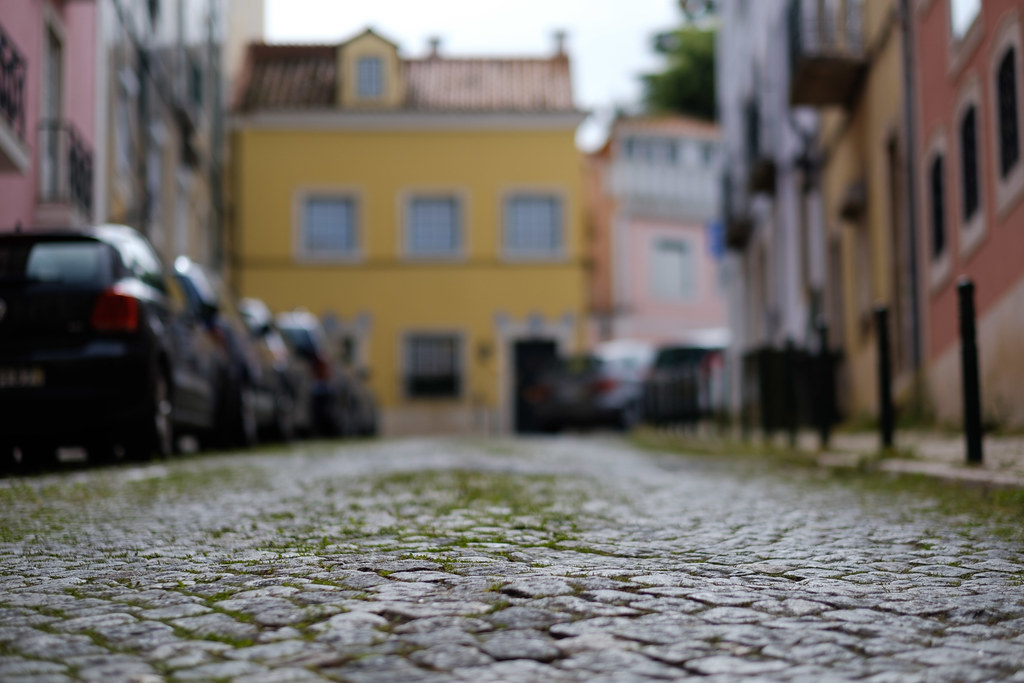
Classic Portuguese pavement, artistic black and white stone designs, and uneven hilly cobblestones characterize Lisbon’s streets.
The stone patterns are beautiful, but bring solid, supportive, comfortable walking shoes, preferably with thick rubber soles to handle the uneven terrain. Flip-flops and fashionable flats won’t cut it, especially when it rains.
The stone paved roads become slippery. I recommend you pack light to avoid hauling luggage across tricky cobblestones. Leave the suitcase behind and bring a compact backpack.
A backpack allows hands-free to catch your balance up and down Lisbon’s hilly sidewalks.
The Easy Lisbon Quiz
Ready to test your Lisbon knowledge?
I’ve made an easy Lisbon quiz with 5 questions. Let’s see if you can get them right. 🤞
Lisbon Has Extreme Weather
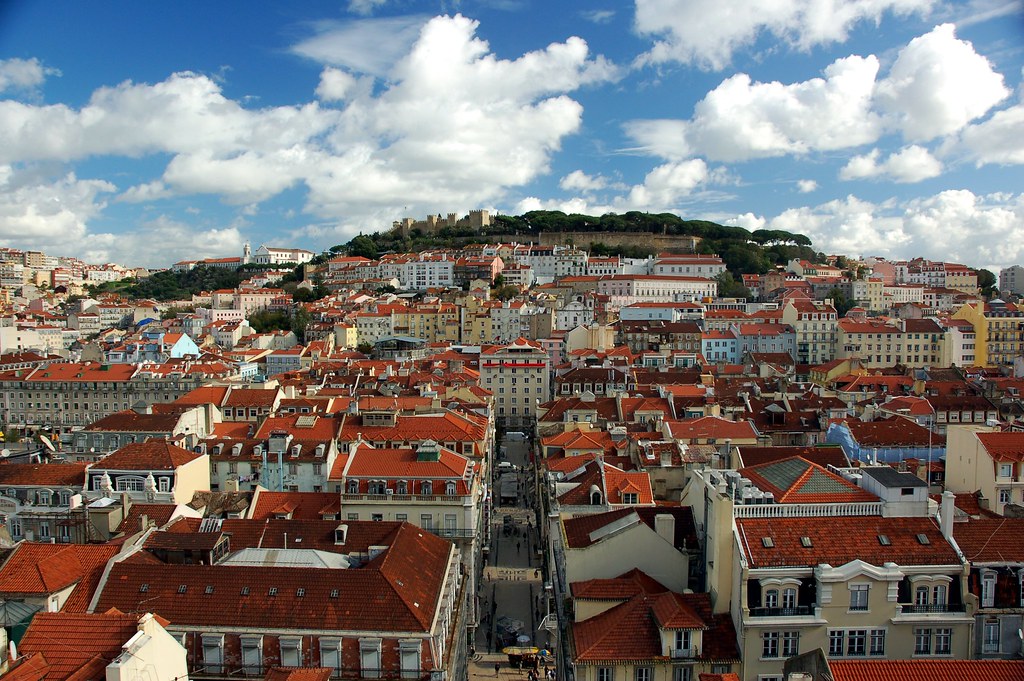
Lisbon experiences a Mediterranean climate with hot, dry summers and mild, wet winters. Understanding the weather patterns is crucial for planning a comfortable walking tour.
Summers are sweltering, with temperatures exceeding 100°F (38°C) in July and August. Meanwhile, winter weather fluctuates between damp chill and occasional snow.
Spring and fall offer the best moderate climate for long walking days.
Attractions Spread Far and Wide
While Lisbon’s attractions are diverse and captivating, they spread across the city. Iconic districts like Alfama, Graca, Avenida Liberdade, and the waterfront Belem lie over 5 miles (8km) apart.
Walking between the downtown Baixa grid and historic Castle Hill takes roughly an hour. Treks to attractions like the Monastery of Jeronimos or Belem Tower take 80-90 minutes on foot.
Constantly walking everywhere in Lisbon leads to sore feet and potentially missing out due to time constraints.
Luckily, you can mix walking with the Lisbon public transport network to enjoy the sights along the way without tiring too much.
How to Make The Best of Lisbon Walking
Lisbon rewards those who explore on foot and offers excellent public transportation to connect the dots traveling from Baixa to Belém. Here are my best options for getting around:
Take a Tuk-Tuk
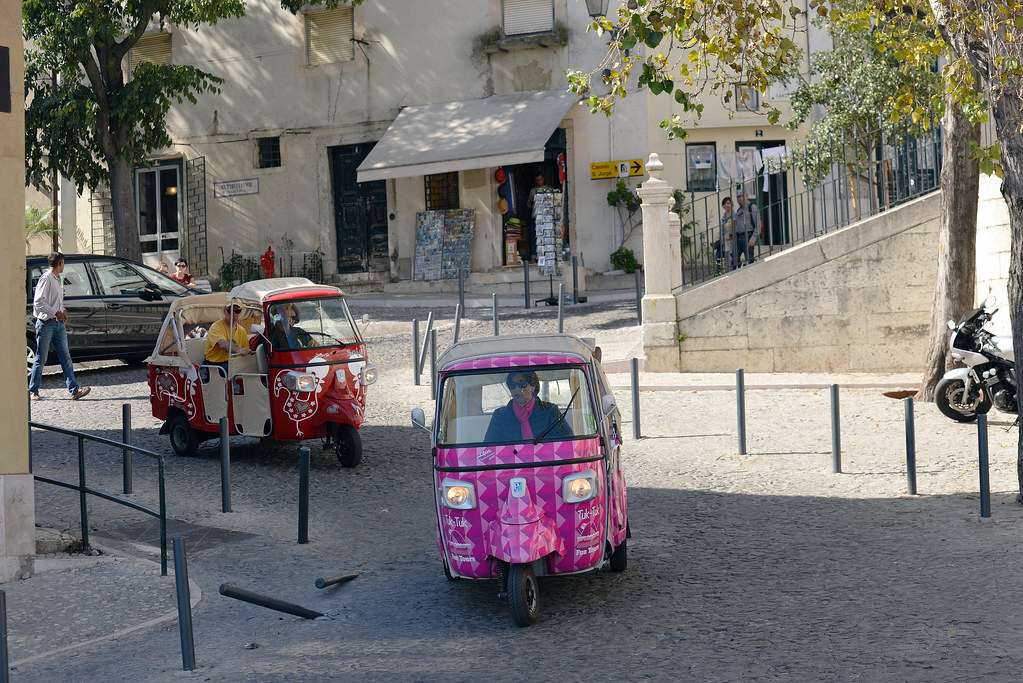
These nimble three-wheeled taxis zip around the tight corners and steep hills other vehicles can’t access.
Taking a spin in a tuk-tuk makes for affordable, adrenaline-pumping sightseeing over short distances between neighborhoods like Barrio Alto and Chiado.
You can find them in most of the popular tourist areas:
- Baixa District: The Baixa district is the heart of Lisbon, and you’re likely to find tuk-tuk services around the main squares, such as Praça do Comércio and Rossio.
- Alfama: Here, you see narrow streets and alleys. Tuk-tuks are a convenient way to navigate Alfama’s charming but hilly terrain.
- Belém: Known for its historic monuments like the Jerónimos Monastery and the Tower of Belém, tuk-tuks are often available to tourists around this iconic area.
- Chiado: This lively district has shops, theaters, and cafes. Tuk-tuks can be found around Chiado, offering a comfortable way to explore the area.
- Avenida da Liberdade: This grand avenue is a central location in Lisbon. Tuk-tuk services may operate around this area, providing a scenic ride along the boulevard.
- Tourist Hubs: Look for tuk-tuk services near popular tourist hubs, such as Praça do Rossio or Praça da Figueira, where many visitors gather.
- Online Booking Platforms: Consider using online platforms or apps that connect tourists with local tuk-tuk services. It is a convenient way to schedule a ride in advance.
Uber
Rideshare apps like Uber typically operate in Lisbon, providing an alternative to traditional taxis.
Uber works well for point-to-point trips to attractions like Belem, far from the walkable downtown.
Uber is affordable and can cost 5 Euros on most rides. The best part is that the drivers know all the shortcuts to save time.
I recommend avoiding taxis as they can be expensive.
The Metro System
Lisbon’s clean and efficient metro system makes hopping between districts like Rossio to Avenida da Liberdade a breeze. Another great thing is that the subway connects the city and the airport.
Purchase a reusable Navegante card and top it up to tap through turnstiles and ride. The metro cuts travel times across the hills and avoids tiring uphill climbs.
But be warned, you do not find elevators or escalators in the subway system, so you must go up a flight of stairs.
Take a Famous Tram Ride
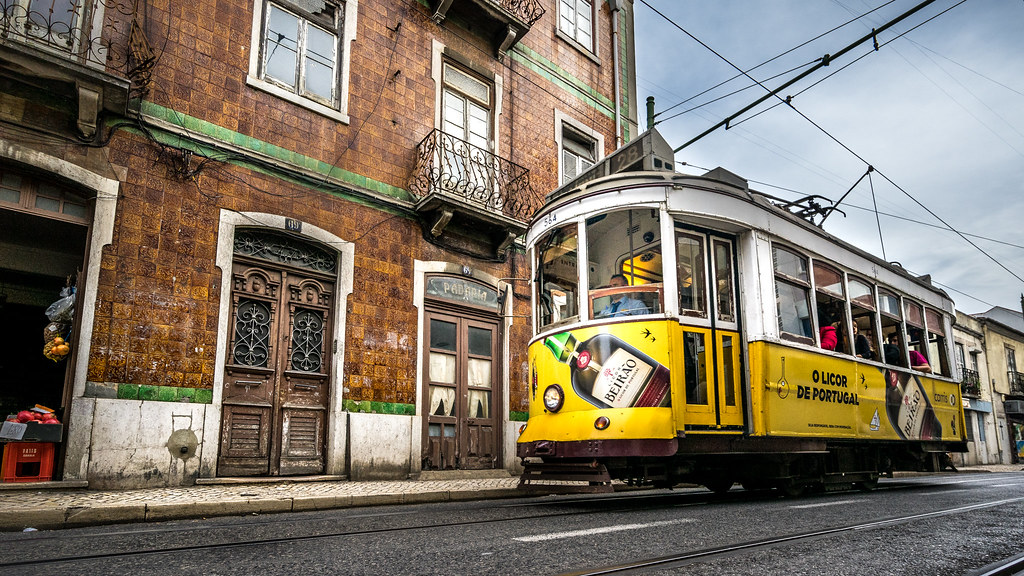
Clanging yellow trams grind up steep streets too inclined for buses or the subway. The most famous lines are the scenic routes Tram 28 and the Elevador de Santa Justa.
But local commuter trams like the 12 are also handy for navigating areas like Graca—board with a regular metro card or invest in the Lisbon Card, including transport, discounts, and museum entry.
Planning On Going To Lisbon?
I’ve created a trip planner where you enter the number of days you’re going and what activities you want to do.
Based on your input, you then get an entire vacation planned with ideas.

Bike or Scooter
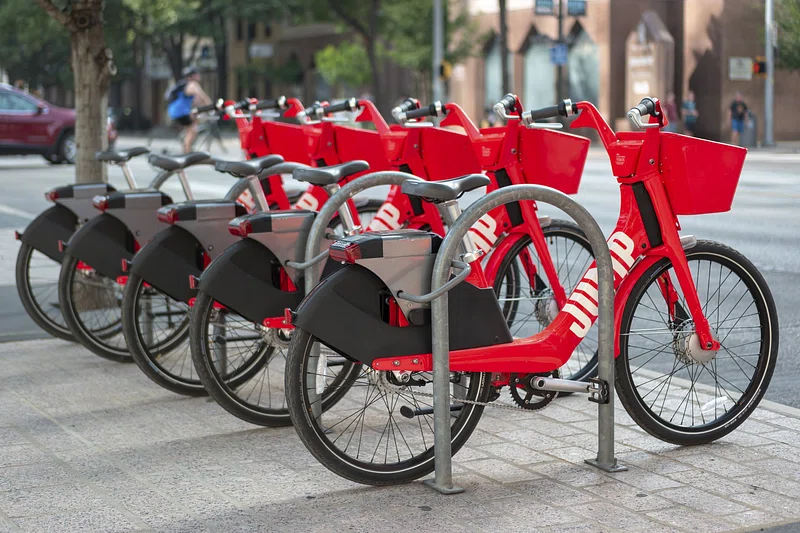
Riding a bike or e-scooter around the wonderful city has become famous thanks to flat seaside pathways and new bike lanes.
Take care navigating slippery cobblestones, but two wheels provide breezy freedom to see pretty neighborhoods line Lapa or Estrela differently.
Why is Lisbon The Most Walkable City?
To see the main attractions, walking on foot is the best way to explore and ensure that you get all the benefits on a one to three-day trip in Lisbon. But what ultimately makes Lisbon suitable for walking includes:
Safety
Portugal enjoys meager violent crime rates, making Lisbon safer than similarly sized European capitals. Walking feels comfortable any time of day or night.
Beauty
Strolling showcases Lisbon’s postcard-perfect beauty. Elegant plazas, miradouro viewpoints, and street art murals dazzle from the sidewalk level.
Small Scale
Lisbon’s older central districts remain intensely pedestrian-scaled. Pretty shopfronts, tiny cafes, and residents chatting out front bring lively intimacy impossible to enjoy speeding by in a car.
Mild Climate
Despite weather fluctuations, Lisbon’s positioning along the coast generally provides pleasant temperatures suitable for outside. Winters hover in the 50s F (teens C), while summer sees highs in the 80s F (high 20s C).
Where to Stay in Lisbon to Quickly Get Around the City?
With attractions and neighborhoods so spread out, Lisbon’s accommodation location is essential for easy sightseeing. Here are the most walkable areas to stay in Lisbon:
Baixa & Rossio
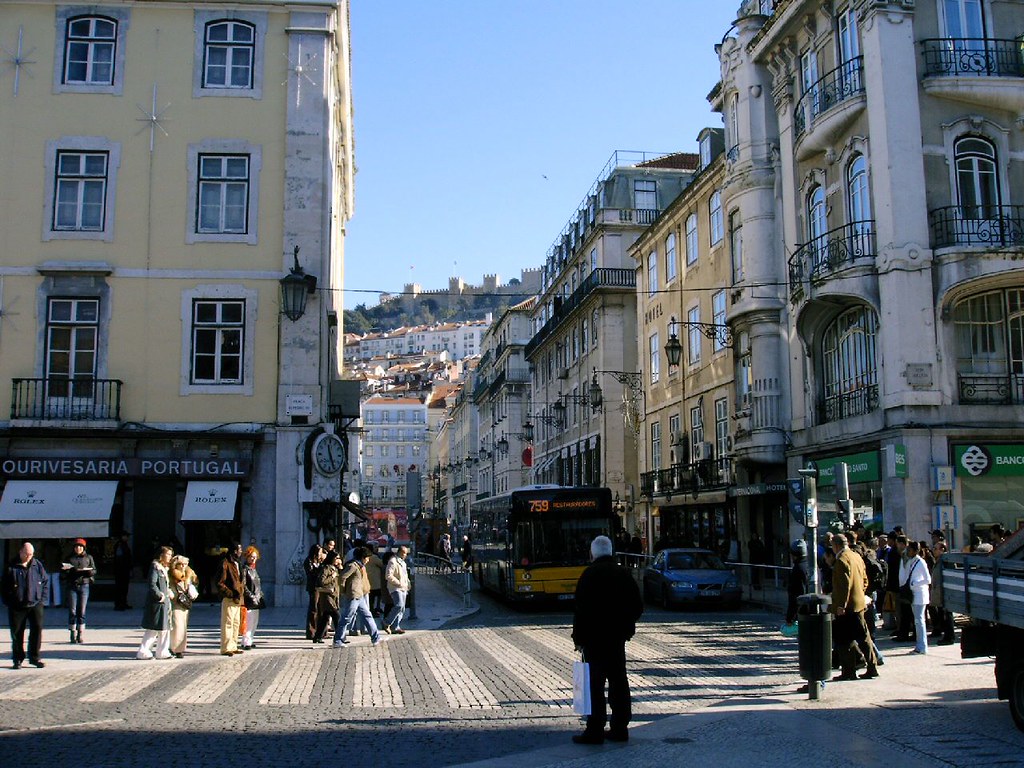
The downtown commercial district provides flat terrain and central proximity to districts like Chiado and Avenida Liberdade on foot.
Here are some reasons why I sometimes stay in this district:
- Central Location: Baixa and Rossio are at the heart of Lisbon, making them centrally located. This strategic position allows easy access to many of the city’s key attractions, historic sites, and cultural landmarks. You’ll find yourself within walking distance of iconic places like Praça do Comércio, São Jorge Castle, and Elevador de Santa Justa.
- Historical Charm: Both Baixa and Rossio are known for their historical charm. Baixa, with its grand squares and neoclassical architecture, and Rossio, with its vibrant atmosphere and historic buildings, offer a unique and immersive experience in Lisbon’s rich history.
- Shopping and Dining: These districts are home to various shops, boutiques, and traditional Portuguese restaurants. Staying in Baixa or Rossio gives you easy access to diverse shopping options, from international brands to local artisans, and a wide range of dining experiences, including traditional Portuguese cuisine.
- Transportation Hub: Rossio is a central transportation hub in Lisbon, with the Rossio Train Station connecting the city to Sintra. The central location also provides convenient access to other forms of public transportation, including buses and metro, making it easy to explore different parts of the city and beyond.
- Vibrant Atmosphere: Both districts are lively with a vibrant atmosphere. You can enjoy street performances, cultural events, and the overall energy of these central areas. The lively vibe extends into the evening, offering entertainment options.
- Pedestrian-Friendly Zones: Many streets in these districts are made for pedestrians. It creates a pleasant environment for strolling and exploring, with outdoor cafes and shops lining the streets. The pedestrian-friendly zones make it easy to navigate on foot.
- Accessibility to Trams and Funiculars: Baixa and Rossio are well-connected to Lisbon’s iconic trams and funiculars. For example, you can catch Tram 28, a popular route that takes you through many of the city’s historic neighborhoods, right from these central districts.
- Cultural Attractions: The districts house cultural venues such as theaters, museums, and art galleries. Staying in these neighborhoods allows you to immerse yourself in Lisbon’s cultural scene easily.
Alfama
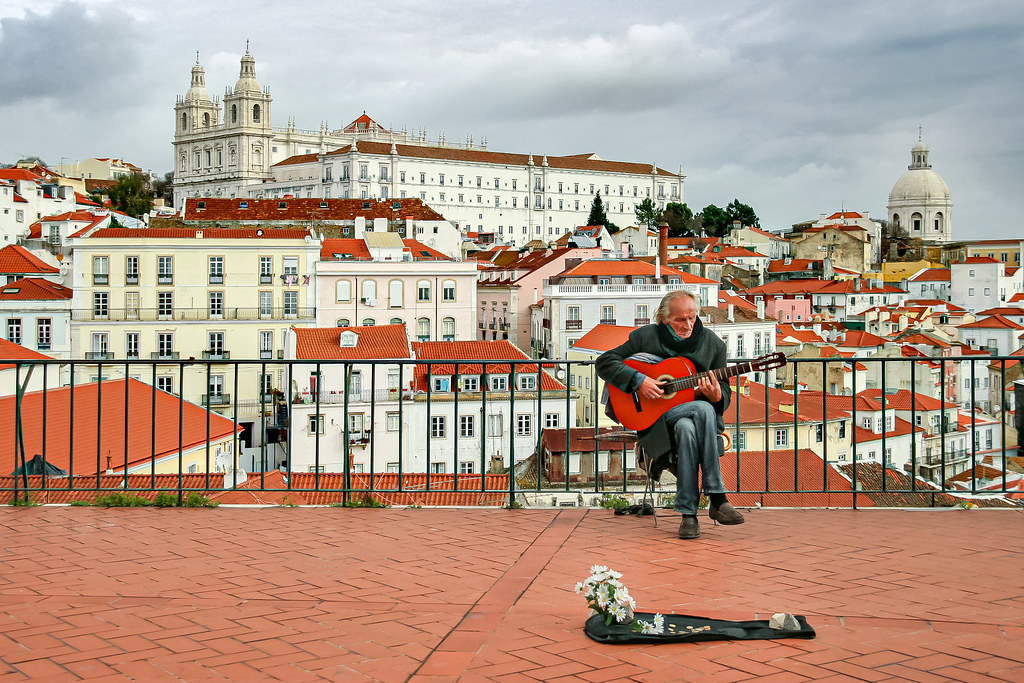
Lisbon’s most picturesque neighborhood directly borders Baixa along the Tagus River. Its village-scale winding lanes reveal gorgeous tilework and panoramas.
Choosing a hotel in Lisbon’s Alfama district provides visitors with a distinctive and enchanting experience.
Nestled between São Jorge Castle and the Tagus River, Alfama is the city’s oldest neighborhood, renowned for its narrow winding streets, historic architecture, and vibrant atmosphere.
Staying in Alfama immerses you in Lisbon’s rich cultural heritage, offering a glimpse into the city’s Moorish past. The district’s unique charm extends to its accommodations, with many boutique hotels and guesthouses nestled within historic buildings.
Waking up in Alfama means being surrounded by the sounds of Fado music drifting through the air, as this area is considered the birthplace of this soulful Portuguese genre.
The neighborhood is a living museum with picturesque alleyways leading to hidden squares and traditional taverns. You can conveniently access iconic landmarks such as São Jorge Castle and the Lisbon Cathedral when staying here.
Additionally, the famous Tram 28 winds its way through Alfama, providing a charming mode of transportation for exploring the neighborhood and beyond. Moreover, it comes alive during Lisbon’s lively festivals, offering a front-row seat to the city’s cultural celebrations.
With its authentic ambiance, breathtaking views, and proximity to historical sites and modern amenities, it promises an unforgettable and immersive experience in the heart of Lisbon.
Here are the best things to do in Lisbon In July 2024
I’ll send you a list of the best things to do in July and every month moving forward from today.
It’ll be based on my personal experience of living and traveling around Lisbon. A lot of hidden gems.
Bairro Alto & Chiado
Youthful nightlife districts connect to intelligent shops and cafes downhill. Stroll from buzzy bars to elegant plazas via the charming Steps of Santa Catarina.
Bairro Alto, known for its bohemian atmosphere, is famous for its lively nightlife, diverse restaurants, and eclectic shops.
Staying in this district immerses you in the energy of Lisbon’s youth culture and offers convenient access to many entertainment options.
Adjacent to Bairro Alto, the Chiado district is a sophisticated and historic area known for its elegant architecture, cultural institutions, and fashionable boutiques.
You will be surrounded by a blend of tradition and modernity, with iconic landmarks like the historic Café A Brasileira and the beautiful ruins of the Carmo Convent nearby.
Both districts are connected by picturesque streets, creating a dynamic urban landscape.
From trendy rooftop bars in Bairro Alto to the historic Carmo Square in Chiado, the blend of historical charm and contemporary flair makes this area a hotspot for locals and visitors.
Additionally, the districts are well-connected to public transportation, facilitating exploration of other parts of Lisbon.
Avenida da Liberdade
This grand avenue is renowned for its tree-lined boulevard, upscale shops, and elegant architecture.
Opting for accommodation in this area provides a sophisticated experience, surrounded by designer boutiques, high-end restaurants, and cultural attractions.
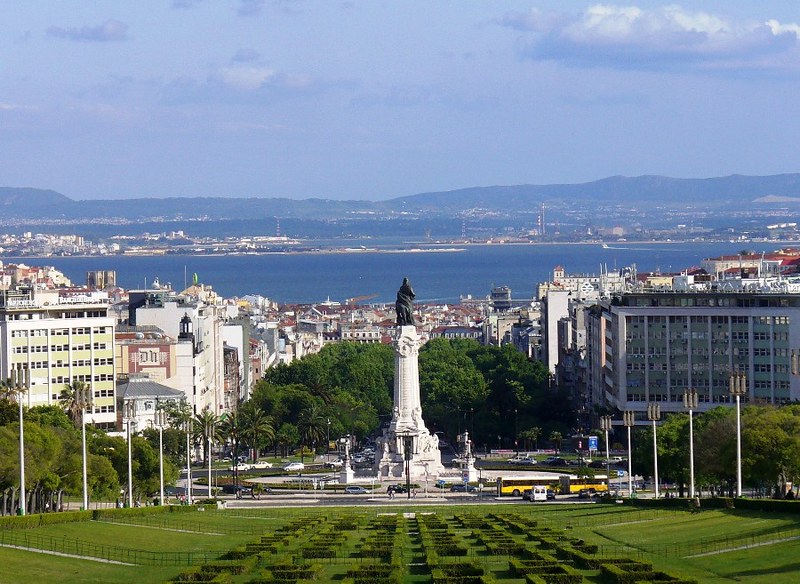
Avenida da Liberdade is a hub for business and leisure travelers, with easy access to major landmarks like Marquis of Pombal Square and the historic Restauradores Square.
The avenue is a shopping paradise and a leisurely pace for a stroll, offering a unique blend of greenery and urban sophistication.
Staying along Avenida da Liberdade ensures proximity to public transportation, facilitating exploration of other parts of Lisbon.
The central location, coupled with the avenue’s refined ambiance, makes it an attractive choice for those seeking a combination of luxury, convenience, and cultural richness in the heart of Lisbon.
Graca
Authentic residential enclave above Alfama offers lower accommodation rates while putting trams, viewpoints, and Castle St George within walking reach.
Nestled on one of the city’s seven hills, Gracia offers breathtaking panoramic views of Lisbon and the Tagus River. Staying in this area provides a quieter and more residential atmosphere than the bustling city center.
The district is known for its narrow, winding streets, historic architecture, and a local ambiance that captures the essence of traditional Lisbon.
Choosing accommodation here allows for an immersive experience, with proximity to cultural gems like the São Vicente de Fora Church and the National Pantheon.
The district is also home to the famous “Miradouro da Senhora do Monte,” offering one of the most stunning viewpoints in the city.
Moreover, it boasts a variety of local eateries, traditional Fado houses, and cozy cafes, providing an authentic taste of Portuguese life.
The neighborhood’s authenticity, cultural richness, and scenic beauty make staying in Gracia an excellent choice for those seeking a more relaxed and genuine Lisbon experience.
The Advanced Lisbon Quiz
You’re now at the advanced Lisbon quiz with more difficult questions. No one gets every question right, so don’t beat yourself up on it. Good luck.
Wrap Up
Is Lisbon walkable? Absolutely! Lisbon rewards foot exploration, especially around the scenic historic districts along the Tagus River or through pretty squares.
Cobblestones, hills, and extreme weather rarely deter you from attempting to walk it all. But mixing walking with efficient public transport like Lisbon’s metro, trams, and tuk-tuks makes covering more ground realistic.
Choosing centrally located accommodations around districts like Baixa, Avenida da Liberdade, and Alfama also ensures the ability to walk and sightsee easily throughout your stay.
